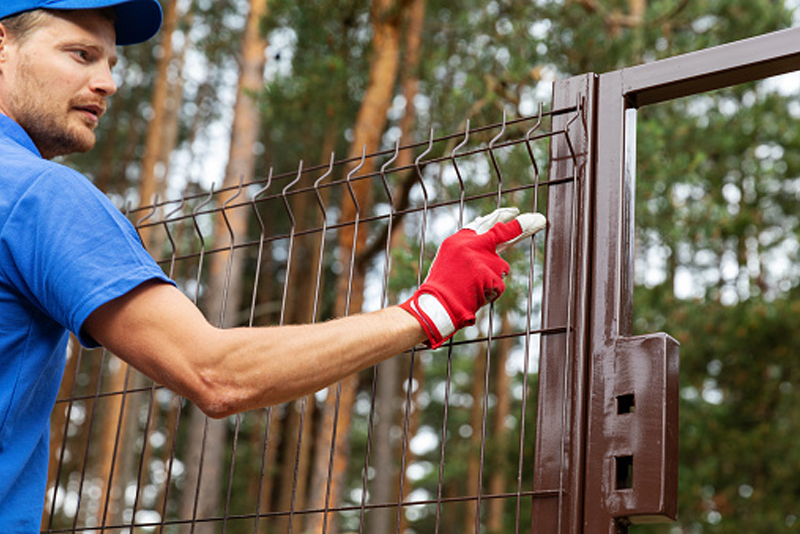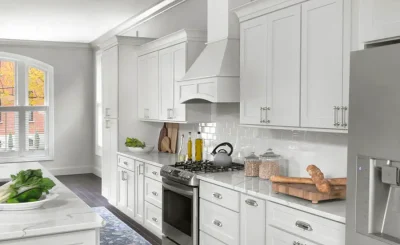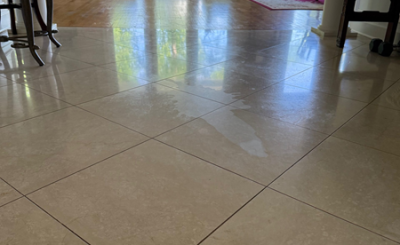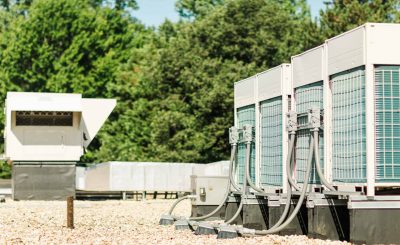Hiring the right fencing contractor is the difference between a fence that lasts and a fence that lets you down. As a fencing contractor with many years on site, I want to help you buy well, compare quotes with confidence, and understand the choices that drive cost and quality. If you are starting your search and need fencing near me, you can see how we work here: fencing near me.
What a good fencing contractor actually does
A good contractor does more than set posts and fit panels. The work starts before a spade hits the ground. We survey the site, confirm boundaries, plan access, and check for risks. We choose the right post size, depth, and footing. We select materials that suit the soil, wind, and use case. Then we build in a way that manages water, movement, and wear. That is the core of reliable fence installation. It is also why not all fencing contractors are the same.
How to read and compare quotes
Many homeowners collect three quotes then pick the middle price. That can work, but only if you compare like for like. Use this simple checklist.
- Scope: length in metres, height, and style. Confirm gates, gravel boards, posts, and caps.
- Posts: timber, concrete, steel, or composite. Size, spacing, and footing depth stated.
- Footings: dry mix or ready mix, volume per post, and expected cure time.
- Panels or boards: type, thickness, treatment, and warranty.
- Fixings: galvanised or stainless steel, size and count.
- Waste: removal method and tip fees included.
- Groundworks: clearance, stump removal, and levelling.
- Access: how materials will reach the garden and if protection boards are included.
- Lead time: start date, estimated duration, and daily working hours.
- Aftercare: snagging window, repair process, and product warranties.
If a quote is thin on detail, ask for a revision. Clear quotes protect both sides. They also help you compare fencing contractors near me on more than price.
Price anchors that shape your budget
Most fence projects are driven by five levers: material type, post specification, ground conditions, access, and finish. Materials sit at the top. Timber is the starting point for many homes. Composite and metal raise the budget but cut maintenance. Concrete posts and gravel boards add cost on day one but help over the long term. Complex access and heavy groundworks also move the needle. Keep these levers in view when you assess a quote from any fence company near me.
Materials at a glance
Timber fencing
Timber is flexible, strong, and repairable. For panels, look for pressure treated options with robust framing. For closeboard, look for solid arris rails, quality featheredge boards, and proper nailing patterns. Timber suits most gardens and is cost effective. It needs periodic checks and treatment where exposed cuts occur. Good build quality reduces movement and twist in the first year.
Composite fencing
Composite fencing blends wood fibres with polymers. It offers a tidy, uniform look with low upkeep. It resists rot and does not need painting. Composite fencing cost depends on board profile, colour, post system, and top trims. It is heavier and needs a stable post design. It can be the right choice when you want long service life and a clean, modern style.
Concrete and steel elements
Concrete posts and gravel boards manage rot risk where the fence meets the ground. They add stability and protect the boards from damp soil. Steel posts are lighter and neat, with long life when coated well. Both options can pair with timber or composite.
Decorative options
Trellis tops, lattice details, and bespoke gates raise curb appeal. They can also help stage heights where planning limits apply. Choose features that are strong, not flimsy add ons.
Posts, foundations, and wind
A fence is only as strong as its posts. In most gardens a 2.4 m post set at least 600 mm deep is a sound starting point for a 1.8 m panel. Heavier soils or exposed sites may need deeper footings and larger sections. In clay, plan for movement and drainage. In soft ground, widen the footing. On windy plots, narrow panel gaps or use hit and miss layouts to let air pass. These small choices cut the risk of lean and lift.
Installation sequence that stands the test of time
- Measure twice and mark the line with string.
- Confirm underground services and set safe dig zones.
- Clear vegetation and remove old posts and footings.
- Drill holes to depth and check spacing with a panel as a guide.
- Set corner and end posts first. Brace them for plumb and line.
- Concrete posts in, then allow a proper initial set.
- Install rails or slide panels with fixings that will not rust.
- Fit gravel boards and caps to manage water.
- Hang gates on proper hinges with secure latches.
- Walk the line, check levels, and sign off with the client.
This flow limits rework and protects your garden and your neighbour’s side.
Lead times and how to plan around them
Lead time changes with season and weather. Spring and early summer book fast. Big storms fill diaries with fence repair near me jobs. Complex designs need longer because of material ordering and workshop time for gates. Simple panel replacements move quicker. A clear scope, fast decisions on style, and on time deposits keep your place in the queue. Ask your fencing contractor near me to confirm when materials will land and what could delay the start.
Planning rules and boundaries in plain English
Most garden fences fall within standard limits. Height, proximity to highways, and front garden lines can affect what you are allowed to do. If you plan a taller or unusual design, check the local rules first. Boundaries matter too. Confirm your side of the line and ownership of existing structures. That avoids disputes and keeps work moving. Your contractor should flag these items during the survey.
Repair or replace
Not every tired fence needs a full rebuild. If posts are strong but panels are failing, replace panels only. If a single post has rotted, a spur repair can extend life. If multiple posts have failed, new posts across the run may be the right call. Repairs suit budgets and reduce waste. Replacements deliver a clean slate and a consistent look. Ask your contractor to price both so you can compare.
How to select between fencing styles
Closeboard suits privacy and strength. Lap panels suit budget projects but need care to avoid sagging. Hit and miss works in windy spots and has a smart finish. Slatted designs give light and a modern look but need careful spacing to keep privacy. Composite boards give a clean look and low upkeep. Match the style to the purpose, site, and budget.
The “fencers near me” checklist
When you search fencers near me, look beyond the gallery images. Ask for:
- Recent, local jobs of a similar type.
- A clear, itemised quote with materials named.
- Warranty terms for both products and workmanship.
- Evidence of insurance and waste carrier details.
- A named site lead and daily start times.
- How they protect lawns, paths, and beds.
- How they handle rain days and access limits.
Good teams welcome these questions. It shows you care about the outcome.
Red flags to avoid
Be careful if you see vague quotes with no materials listed. Be careful if a contractor insists on cash only. Be careful if they cannot show recent work. Be careful if the price is far lower than the rest without a clear reason. Shortcuts on posts, footings, or fixings cost more in the end.
Composite fencing cost factors in detail
Composite carries a higher ticket than basic timber, but the lifetime picture can be favourable. Cost rises with board thickness, cap styles, colour fastness, and branded systems. Matching composite posts add to strength but increase cost. Steel or concrete posts can also work with composite, yet the post system and clips must match. Labour is a factor too. Composite often takes more time to install with care. If you want a true apples to apples view, ask for a timber price and a composite price built to the same height and length, with the same post design. Then compare based on lifecycle and maintenance rather than day one spend.
Gate choices that do not sag
A gate is the most stressed part of the fence. Select a frame that is braced, hung on the hinge side post with substantial fixings. For timber, choose proper mortice and tenon joinery or a robust ledged and braced build. Check clearances to prevent drag on paving. Fit quality latches and keep an eye on seasonal movement. A good gate closes cleanly and stays square.
Slopes, trees, and tricky ground
Few gardens are flat. On gentle slopes, step panels down the line while maintaining post heights that look balanced. On steep ground, consider raked boards. Near trees, plan around roots and use hand digging where needed. In very wet areas, raise the fence off the ground and choose posts and footings that resist water. These details protect your investment.
Noise, privacy, and neighbours
If you share boundaries, talk early. Agree the height and style. Confirm who gets the smooth side. Discuss access and timings. A quick chat prevents complaints. For noise, dense closeboard with a good mass helps. For privacy, check sight lines at seating height, not just standing height. A small change in height near a patio can make a big difference.
Maintenance that keeps costs down
Even low upkeep fences benefit from basic care. Keep plants off the boards. Clear soil that piles up against gravel boards. Wash down algae before winter. For timber, seal cut ends and check for loose fixings each spring. Small tasks reduce call outs and extend life.
Health, safety, and tidy work
Contractors should manage dust, noise, and site safety. That includes safe storage of cement, proper handling of concrete washout, and protection for paving. Good crews keep a tidy site and leave gardens as they found them. Ask how your contractor will handle waste and recycling. It shows respect for your home.
What affects fence installation near me timing on the day
On the day, access and ground type drive pace. Narrow side passages limit movement. Long carries slow the job and increase fatigue. Hard dig in stony ground adds time. Old concrete footings take effort to remove. A realistic schedule helps you plan and avoids rushed work. If you need a date by a deadline, agree it up front and allow a buffer.
When to choose concrete posts and gravel boards
Concrete posts and gravel boards are popular in the UK for good reason. They manage rot risk at ground level and allow simple panel swaps later. They add weight and need deeper holes. In small gardens with tight access, that can be a factor. If looks matter, consider smooth concrete or paint grade finishes. For a softer look, timber posts with composite or timber gravel boards can balance durability and style.
Sustainability in simple steps
Sustainable choices need not be complex. Source timber from certified supply. Reuse sound posts or gravel boards where safe to do so. Choose fixings that last. Plan deliveries to reduce trips. A durable fence with a long life is the most sustainable option of all.
Common questions I hear on surveys
Which is stronger, panels or closeboard?
Closeboard, when built well, is robust and easy to repair board by board. Quality framed panels are also strong when paired with the right posts.
Do I need planning permission?
Most rear garden fences under common height limits do not, but check if near a highway or if you want extra height. Ask your local authority for clarity.
Timber or composite for a coastal or windy plot?
Composite and well built closeboard both work. The post and footing design matter more. Consider hit and miss for airflow in exposed spots.
Can I mix materials?
Yes. Many clients choose concrete posts with timber or composite boards. The key is compatible systems and tidy details.
How to brief a contractor so you get the result you want
Bring a simple brief to the survey. Length and height, pictures of styles you like, and notes on problem areas. Be honest about budget. Tell us how you use the space and what matters most to you – privacy, wind, pets, or style. Clear briefs speed up quotes and cut revisions.
Why local knowledge still matters
Local conditions shape good fencing. Clay pockets, wind corridors, and common boundary layouts all affect design. That is why people search fencing companies near me and fencing contractor near me rather than picking a distant firm. Local crews know the quirks and the suppliers. They can visit fast for surveys and fence repair near me work. If you are in West Yorkshire and want to see how we approach local projects, visit our page on fencing contractors.
Budget planning that is fair and transparent
Ask for an itemised quote with materials listed by name. Confirm the rate for any extra posts or unexpected groundworks. Ask how price changes if you adjust height by a single board. Small changes can unlock savings. Request a split between labour and materials if you need to stage payments. Keep a small contingency for surprises under old fencing lines.
Project management in plain terms
Once you accept the quote, you should receive a clear start date, a deposit request if applicable, and a job plan. Materials are ordered and scheduled for delivery. On day one the team walks the line with you to confirm details. At handover you get care notes and any warranties. If you need ongoing help or seasonal checks, agree that at the end. For an overview of our wider fencing services, start at our homepage.
Final advice from the toolshed
Take your time with the survey. Get quotes that state exactly what you are buying. Match the fence design to your plot, not a picture online. Think about wind, water, and pets. Spend where it lasts – posts, footings, and fixings. Ask for a realistic lead time and a tidy site plan. With those steps, you will not need to gamble on fencing contractors near me or chase hard sells. You will know what good looks like and you will buy once.
If you are ready to plan your own project, start with a short list of length, height, style, and gate needs. Then speak to a contractor who can explain their choices in simple terms. Good fences are not an accident. They come from clear briefs, sound methods, and pride in doing the basics well.








